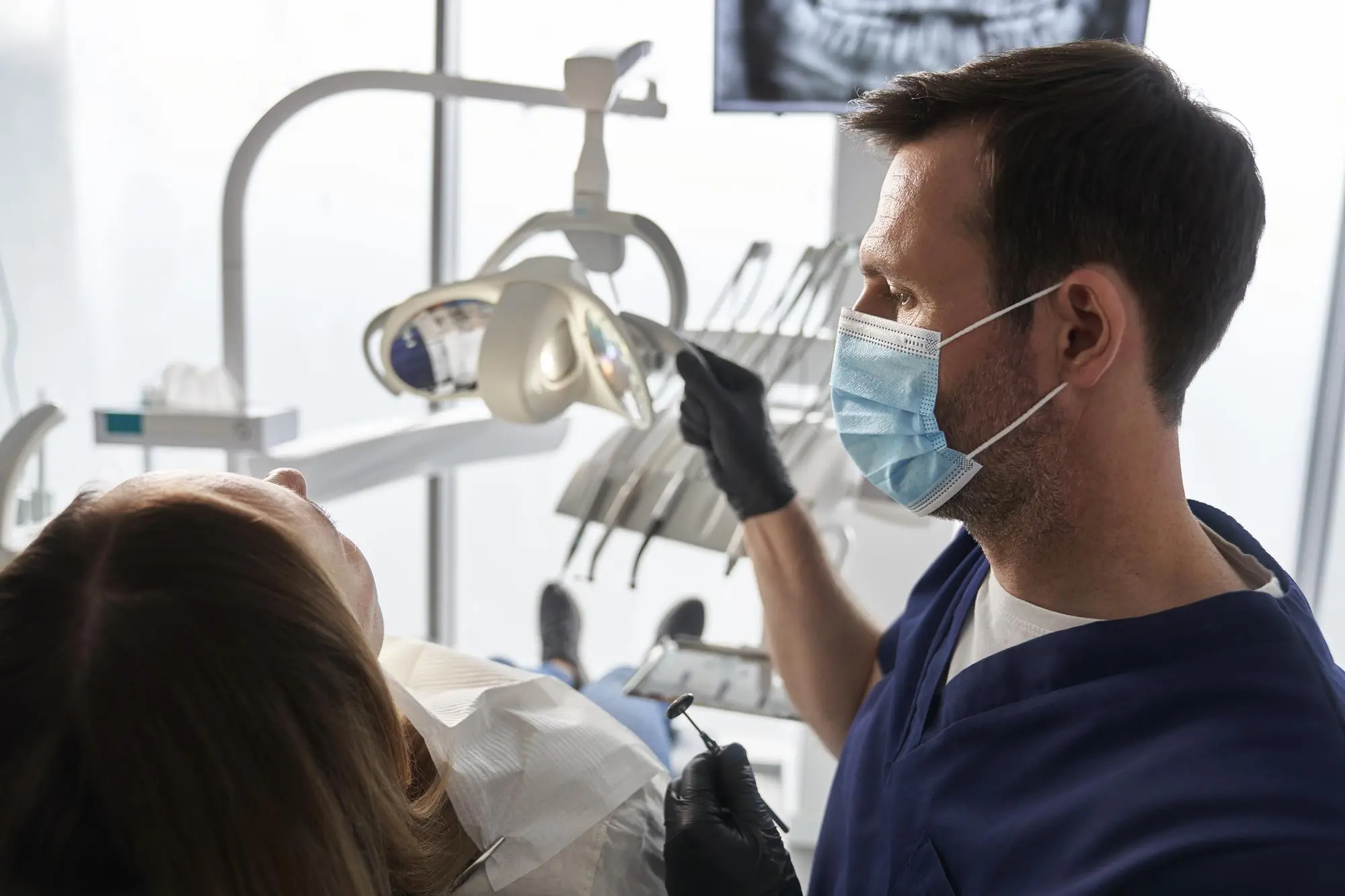Dental restoration refers to the procedures used to repair and restore the function, integrity, and morphology of missing or damaged tooth structures. These procedures are essential in modern dentistry as they help improve not only the appearance but also the health and functionality of teeth affected by decay, trauma, or wear. The goal of dental restoration is to restore the natural look and function of teeth, ensuring that patients can enjoy a healthy, confident smile.
Introduction to Dental Restoration
Over the years, dental restoration techniques have evolved significantly, thanks to advancements in dental materials and technology. Today, dentists can offer a wide range of restorative treatments that are more durable, aesthetically pleasing, and comfortable for patients. These advancements have made it possible to address even the most complex dental issues effectively.
Dental restoration can be categorized into two main types: direct and indirect restorations. Direct restorations involve applying a filling directly into a prepared cavity, while indirect restorations involve creating customized restorations outside the mouth and then fitting them onto the damaged tooth. Each type of restoration has its unique advantages and applications, depending on the specific needs of the patient.
At Fortune Smiles Dental Care, we are dedicated to providing our patients with the highest quality dental restoration services. Our experienced team utilizes state-of-the-art techniques and materials to ensure that each restoration is both functional and aesthetically pleasing. Whether you need a simple filling or a complex dental implant, we are committed to helping you achieve optimal oral health and a beautiful smile.
In the following sections, we will delve deeper into the various types of dental restorations, the procedures involved, and the benefits and considerations of these treatments. This comprehensive guide will help you understand the options available and make informed decisions about your dental care.
Read it: Revolutionizing Restorative Dentistry
Types of Dental Restorations
Dental restorations come in various forms, each designed to address specific dental issues and restore the function and appearance of teeth. Understanding the different types of dental restorations can help you and your dentist choose the most appropriate treatment for your needs. The main types of dental restorations include fillings, crowns, bridges, dentures, and implants.

1. Dental Fillings
Dental fillings are one of the most common types of restorative procedures. They are used to repair teeth that have been damaged by decay or minor fractures. Fillings can be made from various materials, including amalgam, composite resin, gold, and ceramic.
- Amalgam Fillings: Amalgam fillings are made from a mixture of metals, including silver, mercury, and tin. They are durable and can withstand the forces of chewing, making them ideal for restoring molars. However, their metallic appearance makes them less popular for visible teeth.
- Composite Resin Fillings: Composite resin fillings are made from a tooth-colored material that blends seamlessly with the natural teeth. They are ideal for restoring front teeth or any visible areas of the mouth. Composite fillings bond directly to the tooth structure, providing additional support.
- Gold Fillings: Gold fillings are highly durable and can last for many years. They are biocompatible and resistant to corrosion. However, their cost and metallic appearance make them less common for visible areas.
- Ceramic Fillings: Ceramic fillings are made from porcelain and offer excellent aesthetic qualities. They are resistant to staining and can be color-matched to the natural teeth. Ceramic fillings are a popular choice for patients seeking a natural-looking restoration.

2. Dental Crowns
Dental crowns, also known as caps, are used to restore teeth that have been severely damaged by decay, trauma, or wear. Crowns cover the entire tooth, providing protection and restoring its shape, size, and function.
- Porcelain Crowns: Porcelain crowns are popular for their natural appearance. They can be color-matched to the surrounding teeth, making them ideal for restoring front teeth. Porcelain crowns are also biocompatible and gentle on the gums.
- Porcelain-Fused-to-Metal (PFM) Crowns: PFM crowns combine the strength of metal with the aesthetic qualities of porcelain. The metal core provides durability, while the porcelain exterior offers a natural look. PFM crowns are suitable for both front and back teeth.
- Gold Crowns: Gold crowns are highly durable and resistant to wear. They are often used for molars, where the forces of chewing are greatest. Gold crowns are biocompatible and require less tooth reduction compared to other types of crowns.
- Zirconia Crowns: Zirconia crowns are made from a strong and durable ceramic material. They offer excellent aesthetics and are resistant to chipping and staining. Zirconia crowns are suitable for both front and back teeth.
3. Dental Bridges
Dental bridges are used to replace one or more missing teeth. A bridge consists of artificial teeth (pontics) supported by dental crowns on the adjacent teeth (abutments). Bridges help restore the function and appearance of the smile, prevent the remaining teeth from shifting, and maintain the shape of the face.
- Traditional Bridges: Traditional bridges are the most common type and are supported by crowns on the abutment teeth. They are suitable for replacing one or more adjacent missing teeth.
- Cantilever Bridges: Cantilever bridges are used when there is only one adjacent tooth to support the bridge. They are less common and typically used in areas with less chewing pressure.
- Maryland Bridges: Maryland bridges, also known as resin-bonded bridges, use a metal or porcelain framework bonded to the back of the adjacent teeth. They require less tooth reduction and are ideal for replacing front teeth.
- Implant-Supported Bridges: Implant-supported bridges are anchored by dental implants rather than natural teeth. They provide excellent stability and are a suitable option for patients with multiple missing teeth.
4. Dentures
Dentures are removable prosthetic devices used to replace missing teeth and surrounding tissues. They come in two main types: complete dentures and partial dentures.
- Complete Dentures: Complete dentures are used when all teeth in the upper or lower jaw are missing. They consist of a full set of artificial teeth attached to a gum-colored acrylic base. Complete dentures rely on suction or adhesive to stay in place.
- Partial Dentures: Partial dentures are used when some natural teeth remain. They consist of artificial teeth attached to a metal or acrylic framework that clasps onto the remaining teeth. Partial dentures help maintain the alignment of the remaining teeth and restore function and appearance.
5. Dental Implants
Dental implants are a popular and effective solution for replacing missing teeth. They consist of titanium posts surgically placed into the jawbone, acting as artificial tooth roots. Dental implants provide a stable foundation for crowns, bridges, or dentures.
- Single-Tooth Implants: Single-tooth implants are used to replace individual missing teeth. A crown is attached to the implant post, restoring the appearance and function of the natural tooth.
- Multiple-Tooth Implants: Multiple-tooth implants are used to support bridges or dentures when several teeth are missing. They provide excellent stability and prevent bone loss in the jaw.
- Full-Arch Implants: Full-arch implants, also known as implant-supported dentures, are used to replace all teeth in the upper or lower jaw. A full set of artificial teeth is attached to a series of implants, providing a stable and comfortable solution.
At Fortune Smiles Dental Care, we offer a comprehensive range of dental restoration options to meet the unique needs of our patients.
Our team of skilled professionals is dedicated to providing personalized care and ensuring that each restoration is both functional and aesthetically pleasing. In the next section, we will explore the detailed procedures for various dental restorations, including what patients can expect during their treatment journey.

Procedures for Dental Restorations
The procedures for dental restorations vary depending on the type of restoration needed and the specific condition of the patient’s teeth. This section outlines the detailed steps involved in common dental restoration procedures.
1. Dental Filling Procedure
The dental filling procedure is a straightforward method for repairing teeth damaged by decay or minor fractures.
- Diagnosis and Treatment Planning: The dentist begins by diagnosing the extent of the decay or damage using visual examination and X-rays. Based on the findings, a treatment plan is developed.
- Anesthesia: Local anesthesia is administered to numb the area around the affected tooth to ensure patient comfort.
- Tooth Preparation: The decayed or damaged portion of the tooth is removed using a dental drill or laser. The cavity is then cleaned and shaped to prepare for the filling.
- Filling Placement: The chosen filling material (amalgam, composite resin, gold, or ceramic) is placed into the prepared cavity. Composite resin fillings are applied in layers and cured with a special light to harden each layer.
- Shaping and Polishing: Once the filling is in place, the dentist shapes and polishes it to ensure a smooth surface that blends seamlessly with the natural tooth. The bite is checked and adjusted as necessary.
2. Dental Crown Procedure
Dental crowns are used to restore teeth that are severely damaged or decayed. The crown procedure involves several steps to ensure a precise and long-lasting restoration.
- Initial Consultation and Examination: The dentist conducts a thorough examination to assess the condition of the tooth and determine if a crown is necessary. X-rays may be taken to evaluate the roots and surrounding bone.
- Tooth Preparation: The damaged or decayed portion of the tooth is removed, and the remaining tooth structure is reshaped to accommodate the crown. This involves reducing the tooth’s size and creating a uniform base for the crown.
- Impression Taking: After the tooth is prepared, an impression of the tooth is taken using dental putty or a digital scanner. This impression is sent to a dental laboratory where the custom crown is fabricated.
- Temporary Crown Placement: A temporary crown is placed over the prepared tooth to protect it while the permanent crown is being made. This temporary crown is typically made from acrylic or composite resin.
- Permanent Crown Placement: Once the custom crown is ready, the patient returns to the dentist for the final placement. The temporary crown is removed, and the permanent crown is fitted and adjusted for proper alignment and bite. The crown is then cemented in place using a strong dental adhesive.
3. Dental Bridge Procedure
Dental bridges are used to replace one or more missing teeth. The bridge procedure involves creating a custom bridge that spans the gap and restores the function and appearance of the smile.
- Initial Consultation and Examination: The dentist evaluates the patient’s oral health and discusses the best type of bridge for their needs. X-rays and impressions are taken to plan the treatment.
- Tooth Preparation: The abutment teeth (the teeth on either side of the gap) are prepared by removing a portion of the enamel to create space for the crowns that will support the bridge.
- Impression Taking: Impressions of the prepared teeth and the gap are taken and sent to a dental laboratory where the custom bridge is created.
- Temporary Bridge Placement: A temporary bridge is placed to protect the prepared teeth and maintain the gap while the permanent bridge is being fabricated.
- Permanent Bridge Placement: Once the custom bridge is ready, the patient returns to the dentist for the final placement. The temporary bridge is removed, and the permanent bridge is fitted, adjusted, and cemented in place.
4. Denture Procedure
Dentures are removable prosthetic devices used to replace missing teeth. The denture procedure involves several steps to ensure a comfortable and functional fit.
- Initial Consultation and Examination: The dentist examines the patient’s oral health and discusses the best type of denture for their needs. Impressions of the mouth are taken to create a custom denture.
- Jaw Measurements: Measurements of the jaw are taken to ensure the dentures fit correctly and function properly. This includes recording the bite and the relationship between the upper and lower jaws.
- Denture Fabrication: The impressions and measurements are sent to a dental laboratory where the custom dentures are made. This process may involve creating a wax model of the dentures to check the fit and appearance before the final dentures are fabricated.
- Denture Fitting: The patient returns to the dentist for the fitting of the custom dentures. The dentist checks the fit, comfort, and appearance of the dentures and makes any necessary adjustments.
- Post-Fitting Adjustments: Follow-up appointments are scheduled to ensure the dentures fit comfortably and function properly. Adjustments may be made to address any areas of discomfort or pressure.
5. Dental Implant Procedure
Dental implants are a popular and effective solution for replacing missing teeth. The implant procedure involves several stages to ensure a stable and long-lasting restoration and includes special Implant materials.
- Initial Consultation and Examination: The dentist conducts a thorough examination to assess the patient’s oral health and determine if they are a suitable candidate for dental implants. X-rays and 3D scans may be taken to evaluate the jawbone and plan the treatment.
- Treatment Planning: A personalized treatment plan is developed based on the patient’s specific needs. This plan includes the number of implants, the type of restoration, and the timeline for the procedure.
- Surgical Placement of Implants: The implant posts are surgically placed into the jawbone. This procedure is typically performed under local anesthesia to ensure patient comfort. The implants are allowed to heal and integrate with the bone through a process called osseointegration, which usually takes several months.
- Abutment Placement: Once osseointegration is complete, the abutments (connecting pieces) are attached to the implants. These abutments will support the final restoration.
- Impression Taking: Impressions of the mouth are taken to create a custom crown, bridge, or denture that will be attached to the implants.
- Final Restoration Placement: The custom restoration is fitted, adjusted, and attached to the abutments. The dentist ensures that the restoration fits properly and functions like natural teeth.
Each of these procedures is designed to restore the function, health, and appearance of your teeth, providing long-lasting and aesthetically pleasing results.
Benefits and Considerations
Dental restorations offer numerous benefits, but it is important to consider all aspects before undergoing treatment. This section explores the advantages of dental restorations and the factors to consider.
Benefits of Dental Restorations
- Improved Functionality: Dental restorations restore the functionality of damaged or missing teeth, allowing you to eat, speak, and chew properly. This improvement in function can enhance your overall quality of life.
- Enhanced Aesthetics: Restorations such as crowns, bridges, and veneers can significantly improve the appearance of your smile. They are designed to match the color, shape, and size of your natural teeth, providing a seamless and aesthetically pleasing result.
- Increased Durability: Modern dental materials are highly durable and can withstand the forces of chewing and biting. With proper care, restorations can last for many years, providing a long-term solution for dental issues.
- Preventing Further Damage: Restorations protect the remaining tooth structure from further decay or damage. For example, fillings seal cavities to prevent bacteria from entering, while crowns protect weakened teeth from breaking.
- Boosted Confidence: A healthy, beautiful smile can boost your self-esteem and confidence. Dental restorations can help you feel more comfortable and confident in social and professional settings.
Considerations for Dental Restorations
- Cost: The cost of dental restorations varies depending on the type of procedure, materials used, and the complexity of the case. It is important to discuss the cost and payment options with your dentist to make an informed decision.
- Maintenance: Restorations require proper care and maintenance to ensure their longevity. This includes regular brushing, flossing, and dental check-ups. Your dentist will provide specific instructions on how to care for your restorations.
- Potential Complications: While dental restorations are generally safe, there are potential risks and complications, such as sensitivity, infection, or restoration failure. It is important to discuss these risks with your dentist and follow their recommendations to minimize complications.
- Suitability: Not all dental restorations are suitable for every patient. Your dentist will evaluate your specific dental needs and overall health to determine the best restorative option for you.
Choosing Dental Restorations at Fortune Smiles Dental Care
At Fortune Smiles Dental Care, we are committed to providing our patients with the highest quality dental restoration services. Our experienced team utilizes advanced techniques and materials to ensure that each restoration is both functional and aesthetically pleasing. We offer personalized treatment plans tailored to meet the unique needs of each patient, ensuring optimal results and patient satisfaction.
- Personalized Care: We take the time to understand your specific dental needs and goals, customizing our restorative treatments to provide the best possible outcomes.
- Experienced Team: Our team of skilled professionals has extensive experience in a wide range of dental restoration procedures, ensuring that you receive the highest standard of care.
- Comprehensive Services: From simple fillings to complex dental implants, we offer a full spectrum of dental restoration services to address all your dental needs.
- Patient-Centered Approach: We prioritize your comfort and satisfaction, providing a supportive and welcoming environment for all our patients.
Conclusion
Dental restorations play a crucial role in maintaining and enhancing oral health, function, and aesthetics. By understanding the various types of restorations, the procedures involved, and the benefits and considerations, patients can make informed decisions about their dental care. At Fortune Smiles Dental Care, we are dedicated to helping you achieve a healthy, beautiful smile through our comprehensive dental restoration services. Whether you need a filling, crown, bridge, denture, or implant, our experienced team is here to provide the highest quality care and personalized treatment to meet your needs.

